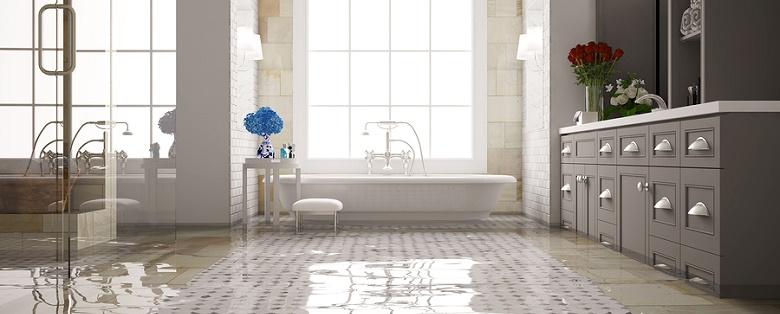
Flooding can cause extensive damage, whether it is because of a problem in the home or due to the forces of nature. Unfortunately, flood damage often increases significantly after the water is gone. The first 24 hours after a water event are the most critical for reducing additional destruction that may occur before flood damage cleaning can be arranged. By using the important tips below, homeowners can take steps to protect their homes from more damage and help ensure that things are brought back to normal after a good cleaning.
Protect Everyone
First and foremost, everyone in the home who will be helping with flood damage cleaning efforts should be protected. Contaminated water can pose health concerns, even if it looks clear. Protect those working in the home with rubber gloves and boots, or wear waders if the water is deep. Respirator masks may also be a good idea if the water is known to be contaminated in any way; that will prevent inhaling any mold or mildew that may develop.
Take Photos and Call the Insurance Company
Immediately after a flood event and before anything is moved, photos should be taken of all the destruction so there is a record of how things initially looked. Next, homeowners should call their insurance company to report the event and the flood damage before any cleanup efforts begin. This can help determine whether the event is covered by an insurance policy. Homeowners should also verify whether they can start cleanup or if the insurer will send professionals to do it. If cleaning can be started before a professional crew arrives, make sure the insurance company knows what will be done and by whom.
In cases of a natural water event, find out from the insurance company if the area has been considered to be a disaster area. If it has, this may entitle homeowners to additional insurance or government assistance in dealing with any flood damage.
Remove Any Remaining Water
After speaking with the insurance company and getting the go-ahead to start flood damage cleaning efforts, any remaining water in the home should be removed. Open the doors and windows to circulate clean air throughout the home, then suction water up with a wet vac or use a sump pump if necessary. Sump pumps make removing standing water easier and more safe than using buckets. They are available at most home centers and hardware stores.
Reduce Damage from Mold and Mildew
Mold and mildew grow very quickly after a flood, causing even more flood damage to a home and its contents. To reduce such growth, remove all damaged items from the house as soon as possible. The longer wet and saturated rugs or furnishings remain in the home, the greater the chance of mold or mildew growth. This is significant since mildew causes bad odors and mold is a potential health risk if inhaled.
Secure the Home
In situations when a home is uninhabitable after a flood, owners should take necessary steps to secure it if they are not present. Any broken windows should be boarded and roofs covered with tarps if necessary. Take pictures of temporary repairs as evidence that the home was secured in case a break-in or vandalism should occur.
A flood is not something that any homeowner wants to face, regardless of the cause. Knowing what to do after the fact can reduce the extent of flood damage many ways. By working with their insurance company and professional flood damage cleaning services, homeowners can get their homes back to normal as quickly and easily as possible!